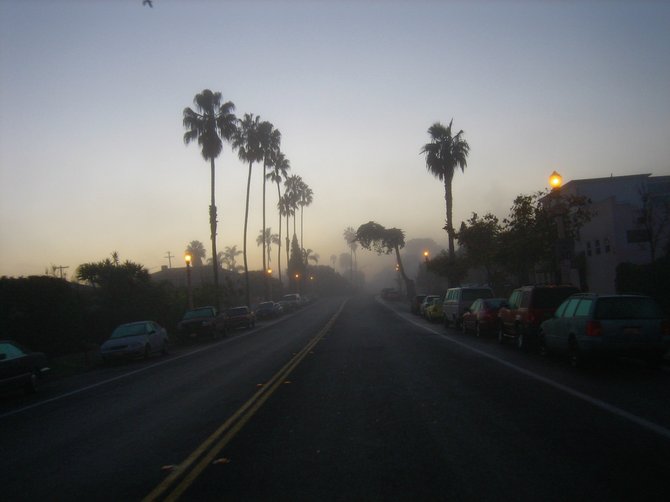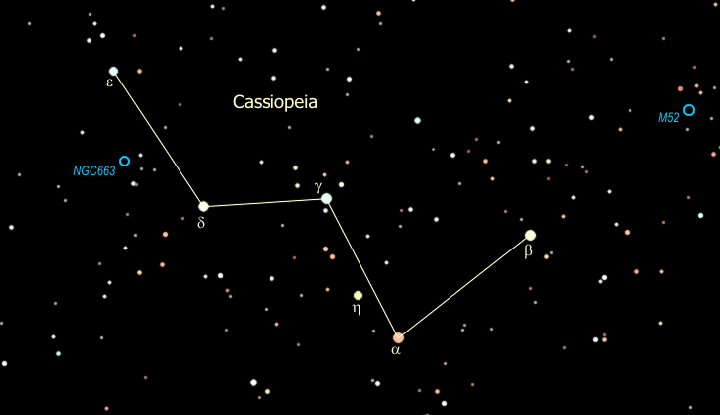 Facebook
Facebook
 X
X
 Instagram
Instagram
 TikTok
TikTok
 Youtube
Youtube

Dense Ground Fogs are a trademark of the onset of autumn along San Diego’s coastal strip. Fog materializes during the night and early morning hours when moist marine air that has settled in valleys and low areas is chilled below the dew point. These ground fogs are distinct from the low overcast (“marine layer”) that usually blankets the coastal zone on latespring and summer mornings.
Spider Webs, decorated with myriads of tiny dew droplets, are a beautiful sight on foggy autumn mornings. Look for them in San Diego’s wild canyons and park areas, or in your own backyard.

As the Beach-Going Season Winds Down, San Diego County’s coastline is padded by what is likely the deepest and widest accumulations of sand we’ll see this year. Many stretches of the coastline are vulnerable to powerful waves associated with winter storms. This wave action can pull sand off the beaches and deposit it offshore, leaving behind (especially in North County) nothing but cobble beds. During the spring and summer gentle wave action usually returns much of the sand, usually in time for the arrival of the summer tourists.

The starry W of Cassiopeia stands high in the northeast these evenings, nearly on end. Look along the second segment of the W counting down from the top. Notice the dim naked-eye stars along that segment (not counting its two ends). The brightest of these, on the right, is Eta Cassiopeiae, magnitude 3.4. It's a remarkably Sun-like star just 19 light-years away, and it has a distant orange-dwarf companion, magnitude 7.3. They're a lovely binary in a telescope.
The above comes from the Outdoors listings in the Reader compiled by Jerry Schad, author of Afoot & Afield in San Diego County. Schad died in 2011. Planet information from SkyandTelescope.org.


Dense Ground Fogs are a trademark of the onset of autumn along San Diego’s coastal strip. Fog materializes during the night and early morning hours when moist marine air that has settled in valleys and low areas is chilled below the dew point. These ground fogs are distinct from the low overcast (“marine layer”) that usually blankets the coastal zone on latespring and summer mornings.
Spider Webs, decorated with myriads of tiny dew droplets, are a beautiful sight on foggy autumn mornings. Look for them in San Diego’s wild canyons and park areas, or in your own backyard.

As the Beach-Going Season Winds Down, San Diego County’s coastline is padded by what is likely the deepest and widest accumulations of sand we’ll see this year. Many stretches of the coastline are vulnerable to powerful waves associated with winter storms. This wave action can pull sand off the beaches and deposit it offshore, leaving behind (especially in North County) nothing but cobble beds. During the spring and summer gentle wave action usually returns much of the sand, usually in time for the arrival of the summer tourists.

The starry W of Cassiopeia stands high in the northeast these evenings, nearly on end. Look along the second segment of the W counting down from the top. Notice the dim naked-eye stars along that segment (not counting its two ends). The brightest of these, on the right, is Eta Cassiopeiae, magnitude 3.4. It's a remarkably Sun-like star just 19 light-years away, and it has a distant orange-dwarf companion, magnitude 7.3. They're a lovely binary in a telescope.
The above comes from the Outdoors listings in the Reader compiled by Jerry Schad, author of Afoot & Afield in San Diego County. Schad died in 2011. Planet information from SkyandTelescope.org.
Comments